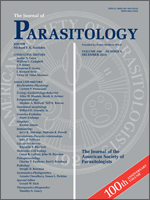Pseudosellacotyla lutzi (Freitas, 1941), at present included in the Faustulidae, is redescribed, and its life cycle was resolved experimentally. The prosobranch snail Aylacostoma chloroticum Hylton Scott (Thiaridae), collected in the Yacyretá Dam, Province of Misiones, Argentina, was found naturally infected with cercariae that lacked pigmented eyespots, and possessed 7 pairs of penetration glands, 8 pairs of flame cells, and a V-shaped excretory vesicle. The cercariae developed in oval cysts, which were found on fin rays, vertebrae, and spines of poeciliid and tetragonopterid fish species. Adults were obtained experimentally from Hoplias malabaricus (Erythrinidae) infected with metacercariae from albino Gymnocorymbus ternetzi (Tetragonopteridae), which had been exposed to emerging cercariae. Adults were also found in naturally infected H. malabaricus collected in the Yacyretá Dam. The morphology of the cercariae, and the characteristics of the life cycle show that P. lutzi should be included in the Cryptogonimidae.
BioOne.org will be down briefly for maintenance on 17 December 2024 between 18:00-22:00 Pacific Time US. We apologize for any inconvenience.
How to translate text using browser tools
1 December 2014
The Life Cycle of Pseudosellacotyla lutzi (Digenea: Cryptogonimidae), in Aylacostoma chloroticum (Prosobranchia: Thiaridae), and Hoplias malabaricus (Characiformes: Erythrinidae), in Argentina
Manuel G. Quintana,
Margarita Ostrowski de Núñez
ACCESS THE FULL ARTICLE

Journal of Parasitology
Vol. 100 • No. 6
December 2014
Vol. 100 • No. 6
December 2014




